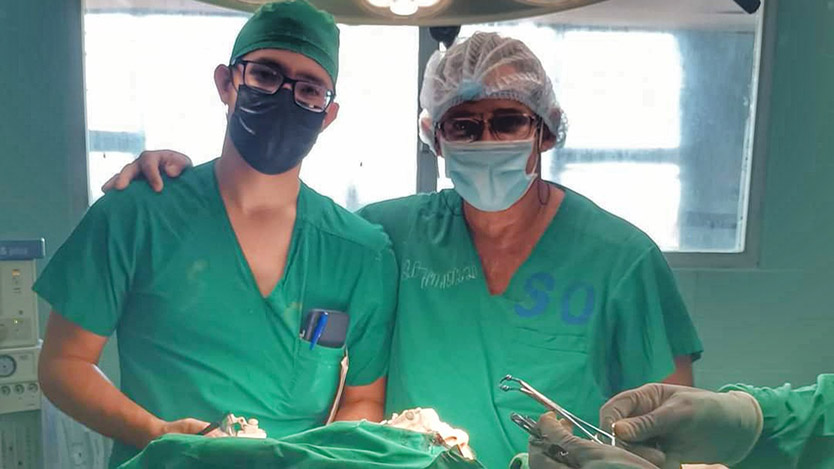Today, the most prominent results of science, technology and innovation in Ciego de Ávila during the year 2022 were recognized in the provincial act for Cuban Science Day, which is celebrated every January 15.

Its study, carried out for more than fifteen years, responds to a global health problem: the high mortality from severe head trauma and "the absence of scientific evidence on the benefit of measures to control intracranial hypertension that is associated in more 65 % of these cases.
Since 2003, in the Neurosurgery Service of the Roberto Rodríguez General Teaching Provincial Hospital, in Morón, the use of decompressive craniectomy has been monitored for early control of intracranial pressure.
To make it clear, this is a surgical procedure in which part of the skull is removed to allow room for swelling of the brain to expand. Between 2003 and 2006, 23 patients, who were part of the study, underwent the usual treatment for severe head trauma, and another 46 cases with craniectomy, in whom mortality was reduced by up to 14.78 %, and it was possible to control intracranial pressure in most cases. As of 2020, the study had already proven its worth in 230 patients.
The contributions of the research go beyond the lives saved in this group. The therapeutic window (range in which a drug or procedure can be applied without harming the patient) was reduced to 12 hours and up to 3 hours (while the treatment guidelines recommended 48), which makes it possible to act more quickly in favor of human life.
In addition, the benefit of expanding the diameter of the flap bone (fragment of the skull that is removed) to more than 15 centimeters was demonstrated, and “an immense strength was the continuous monitoring of intracranial pressure and cerebral percussion pressure, practice in which our hospital is the national leader, together with the Manuel Ascunce hospital, in Camagüey”.
Results? "Mortality was 28 % and complications were few." “Adequate cerebral oxygenation was maintained, blocking the natural evolution towards secondary damage. That was essential.
"Doing science and applying it to medical practice, Dr. Lacerda is already a veteran. This specific research generated his own doctoral thesis (in 2009), more than 30 participations in scientific events and 17 publications in high-impact journals around the world.
The results have been introduced in hospitals in Camagüey, Matanzas, Santiago de Cuba and Las Tunas, guarantees that also earned him the National Award for the result of scientific research in 2022, awarded by the Cuban Academy of Sciences, of which the Dr. is an honorary member.
According to the Cuban Journal of Intensive and Emergency Medicine, each year approximately 1.5 million people die from head injuries, which, in turn, are the result of traffic accidents, falls from a height or "from their feet," and injuries by firearms and sharp objects.Cranioencephalic trauma: balance for Ciego de Avila in 2019.
Regarding to the statistics collected by Dr. Carlos Rojas Borroto, from the Provincial Neurosurgery Service of the Roberto Rodríguez General Teaching Hospital, 45 patients with traumatic brain injury (TBI) were admitted to this institution in the municipality of Morón in Ciego de Avila during 2019.
"It has been called the simple epidemic," Dr. Lacerda Gallarado says, "because since ancient times, wars and current technological development and the automobile industry with accidents have claimed more human lives than any of the great epidemics known to humanity; so, this constitutes a global health problem”.
Dr. Ángel Jesús Lacerda Gallardo was recently named an honorary member of the Cuban Academy of Sciences. Invasor tells of a lifetime of training and experiences until he got there.
A health problem that is put, from Ciego de Ávila, science and heart, because Ángel Jesús Lacerda Gallardo does not know how to work in any other way.




